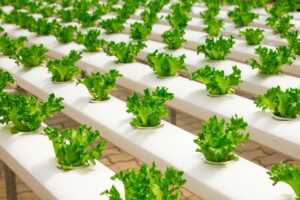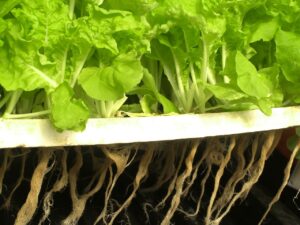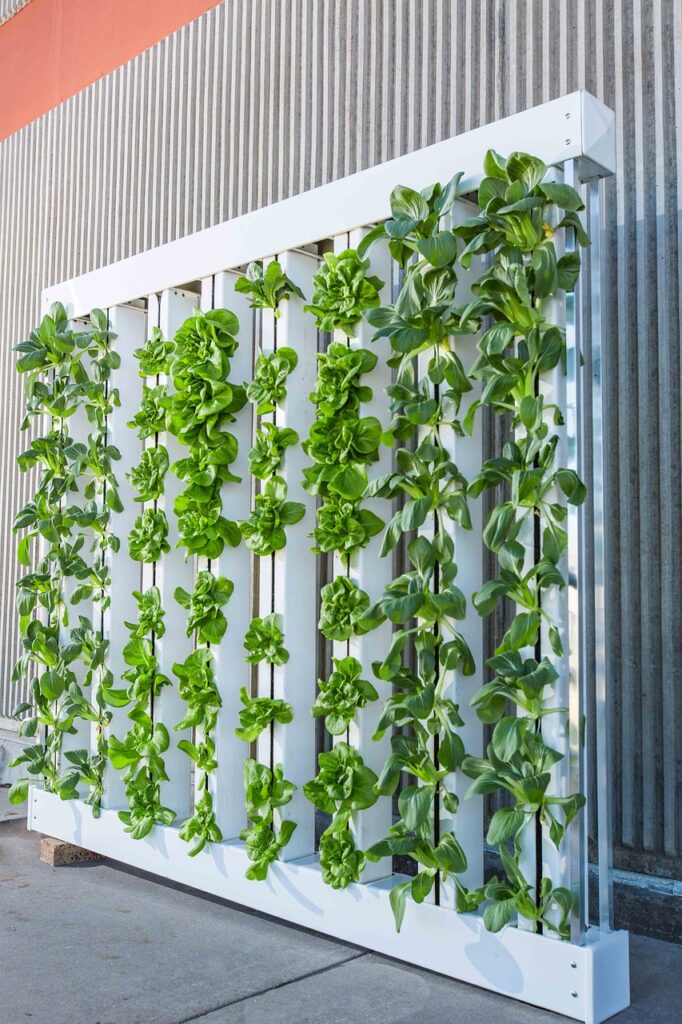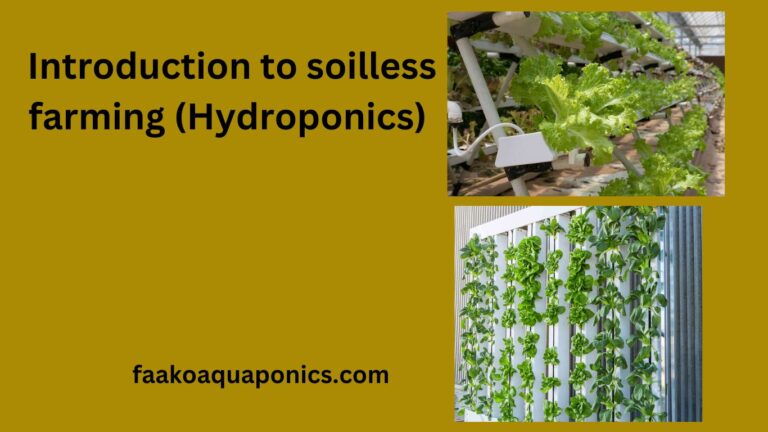Introduction
Hydroponics gardening has evolved beyond traditional soil-based methods, paving the way for innovative techniques like hydroponics. Hydroponics, derived from the Greek words “hydro” (water) and “ponos” (labor), is a method of growing plants without soil. This revolutionary approach to cultivation not only challenges conventional farming practices but also offers a sustainable and efficient alternative for both hobbyists and commercial growers. In this blog post, we’ll delve into the world of hydroponics, exploring its definition, key terms, working principles, various setups, and the myriad benefits it brings to the table. Please read to the end and you shall learn something amazing.
What is Hydroponics
Hydroponics is a soilless cultivation method that relies on nutrient-rich water solutions to nourish plants. By eliminating soil from the equation, growers can exercise precise control over nutrient levels, pH, and environmental factors, fostering optimal conditions for plant growth. This approach allows for more efficient resource utilization and often results in faster, healthier plant development compared to traditional soil-based methods.
Key Terminologies in Hydroponics
Before we dive into the details of hydroponics, let’s familiarize ourselves with some key terms that are commonly used in this field:
1. Nutrient Solution
A water-based mixture containing essential minerals and nutrients required for plant growth.
2. pH Level
The measurement of the acidity or alkalinity of the nutrient solution, crucial for nutrient absorption by plants.
3. Hydroponic Medium
The material in which the plants are anchored and from which they draw support. Examples include perlite, coconut coir, rock wool, and cocopeat.
4. Reservoir
A container holding the nutrient solution, which is then pumped or circulated to the plants.
5. Drip System
A hydroponic setup where nutrient solution is dripped onto the base of each plant.
6. Aeroponics
A hydroponic method where plants are suspended in air, and nutrient-rich mist is sprayed onto their roots.
How Does Hydroponics Work?
Hydroponics operates on the principle that plants primarily need water, nutrients, and sunlight to grow. By providing these essential elements in a controlled environment, hydroponics maximizes the efficiency of resource utilization. Here’s a simplified breakdown of how hydroponics works:
1. Nutrient Delivery
Instead of extracting nutrients from soil, plants receive a precise mixture of water and nutrients directly to their roots. This eliminates the need for plants to expend energy searching for nutrients in the soil and therefore maximizing the plants’ growth.
2. Optimized Oxygen Levels
In traditional soil-based gardening, roots often face challenges in accessing oxygen. Hydroponic systems ensure that roots receive an optimal balance of oxygen, promoting faster nutrient absorption and healthier plant development.
3. Controlled Environment
Hydroponic setups allow growers to fine-tune environmental factors such as temperature, humidity, and light, ensuring that plants receive the ideal conditions for growth.
Types of Hydroponic Setups
Hydroponics offers a variety of setups, each catering to different preferences, space constraints, and plant types. Let’s explore some common types of hydroponic systems:
1. Nutrient Film Technique (NFT)
This system involves a thin film of nutrient solution flowing over plant roots, providing a constant supply of nutrients. NFT is efficient and widely used for growing crops like lettuce and herbs.

Nutrient Film Technique (NFT) of Hydroponics setup
2. Deep Water Culture (DWC)
Plants are suspended in nutrient-rich water, with their roots directly submerged. Air stones or diffusers provide oxygen to the roots. DWC is straightforward and popular for growing a variety of plants.

Deep Water Culture (DWC) of Hydroponics Setup
3. Drip Systems Hydroponics
The nutrient solution is dripped onto the base of each plant at regular intervals. This system is versatile and suitable for various crops, making it a favorite among hobbyists and commercial growers alike.
4. Aeroponics
Plants are suspended in air, and nutrient-rich mist is sprayed onto their roots. This method enhances nutrient absorption and is known for promoting rapid plant growth. Example of this the Vertical Hydroponics or Towel Hydroponics Set ups

Vertical Hydroponics Setup
5. Wick System
This simple and passive system utilizes a wick to draw nutrient solution from a reservoir to the growing medium, ensuring a constant supply of nutrients to the plants.
Benefits or Importance of Hydroponics
Hydroponics offers a lot of benefits that have contributed to its growing popularity among gardeners and farmers alike. Here are some key advantages:
1. Increased Growth Rate
Plants in hydroponic systems often grow faster than their soil counterparts. With direct access to nutrients and optimized oxygen levels, plants can focus more energy on growth.
2. Water Efficiency
Hydroponics uses significantly less water than traditional soil-based gardening. The recirculation of nutrient solutions reduces water wastage, making it an eco-friendly option. It serves up to 95% water as compared to the traditional method of farming.
3. Space Utilization
Hydroponic systems can be set up vertically or in compact spaces, maximizing the use of available area. This is particularly beneficial for urban gardening or in regions with limited arable land.
4. Precise Nutrient Control
Growers have complete control over nutrient levels, allowing for tailored adjustments based on the specific needs of different plants. This precision ensures optimal growth conditions.
5. Year-Round Cultivation
Hydroponics enables year-round cultivation, irrespective of external weather conditions. This is especially advantageous in regions with harsh climates or limited growing seasons. That is why sometimes Greenhouses come into play where you have full control of the weather condition for the plants.
6. Reduced Pesticide Use
The controlled environment of hydroponic systems minimizes the risk of soil-borne diseases and pests, reducing the need for pesticides. This contributes to healthier produce and environmentally friendly farming practices.
7. Higher Yield
Due to optimized growing conditions, hydroponics often results in higher crop yields compared to traditional methods. This makes it an attractive option for commercial farming ventures.
Disadvantages of Hydroponics
While hydroponics boasts numerous advantages, it’s important to acknowledge that like any agricultural method, it comes with its set of challenges and disadvantages. Understanding these drawbacks is crucial for anyone considering adopting hydroponics. Here are some of the notable disadvantages:
1. Initial Cost
Setting up a hydroponic system can be more expensive than traditional soil-based gardening. The need for specialized equipment, nutrient solutions, and control systems can be a barrier for individuals with limited budgets.
2. Technical Expertise
Successful hydroponic cultivation requires a certain level of technical knowledge. Managing nutrient solutions, monitoring pH levels, and troubleshooting potential issues may pose a learning curve for beginners.
3. Electricity Dependency
Many hydroponic systems rely on pumps, lights, and other electronic components. This dependence on electricity can lead to increased operational costs and raises concerns about sustainability in the long run.
4. System Failures
Malfunctions in hydroponic systems, such as pump failures or issues with nutrient delivery, can have immediate and detrimental effects on plant health. Without a backup power source or fail-safes, the risk of crop loss is heightened.
5. Disease Spread
While hydroponic systems generally reduce the risk of soil-borne diseases, they can still be susceptible to certain pathogens. If proper hygiene measures are not maintained, diseases can spread rapidly through the nutrient solution, affecting the entire crop.
6. Environmental Impact
The production of hydroponic equipment, especially high-tech components, can have environmental implications. Manufacturing and disposing of such equipment may contribute to the carbon footprint associated with hydroponics.
7. Crop Failure Risks
If the nutrient solution is not properly balanced or if environmental conditions are not adequately controlled, there is a risk of nutrient deficiencies or toxicities, leading to crop failure.
8. Dependency on Supplies
Hydroponic systems rely on a steady supply of nutrient solutions, which may need to be purchased. Interruptions in the supply chain or unavailability of specific nutrients can disrupt the cultivation process
9. Learning Curve
For those new to hydroponics, there is a learning curve associated with understanding the needs of plants in a soilless environment. Trial and error may be part of the learning process, leading to initial setbacks.
Conclusion
In conclusion, while hydroponics offers numerous benefits, it is not without its challenges. Potential adopters should weigh the advantages against these disadvantages and carefully consider their goals, resources, and commitment before diving into hydroponic cultivation. But the good news is that, most of these cons can be easily overtaken with constant learning and practice.
Hydroponics stands at the forefront of modern agriculture, offering a sustainable and efficient alternative to traditional soil-based cultivation. With its ability to provide precise control over nutrient delivery, environmental factors, and space utilization, hydroponics has become a beacon of innovation in the world of gardening and farming. Whether you’re a seasoned grower or a novice with a green thumb, exploring the possibilities of hydroponics can open new doors to a greener and more sustainable future.
Thank you for reading. If you enjoy the post or otherwise, let me know in the comment box below. You can also checkout another soilless crop production known as aquaponics.

Good web site you have got here.. It’s hard to find high-quality writing like yours these days. I honestly appreciate individuals like you! Take care!!
This website truly has all the information and facts I wanted about this subject and didn’t know who to ask.
Hello there! I could have sworn I’ve been to this blog before but after browsing through many of the posts I realized it’s new to me. Nonetheless, I’m certainly delighted I discovered it and I’ll be bookmarking it and checking back frequently!
Good post. I learn something new and challenging on websites I stumbleupon on a daily basis. It will always be interesting to read articles from other authors and use something from other web sites.
It’s nearly impossible to find well-informed people on this subject, but you seem like you know what you’re talking about! Thanks
I’m pretty pleased to uncover this great site. I need to to thank you for ones time for this fantastic read!! I definitely savored every part of it and I have you bookmarked to see new things on your blog.
Having read this I believed it was rather enlightening. I appreciate you taking the time and effort to put this informative article together. I once again find myself spending a lot of time both reading and posting comments. But so what, it was still worth it!
Hi, I do think this is an excellent website. I stumbledupon it 😉 I am going to come back once again since i have bookmarked it. Money and freedom is the greatest way to change, may you be rich and continue to help others.
Greetings! Very useful advice in this particular post! It’s the little changes that produce the greatest changes. Thanks a lot for sharing!
Very interesting details you have observed,
thank you for putting up.?
I don’t think the title of your article matches the content lol. Just kidding, mainly because I had some doubts after reading the article.
Great info and right to the point. I am not sure if this is
in fact the best place to ask but do you people have any thoughts
on where to employ some professional writers?
Thank you 🙂 Escape rooms hub